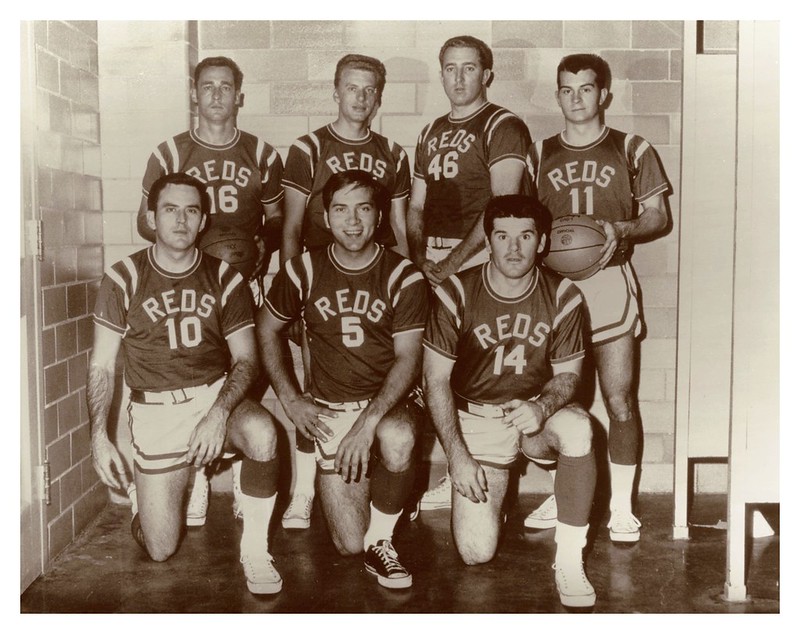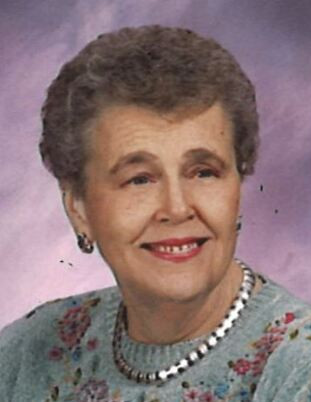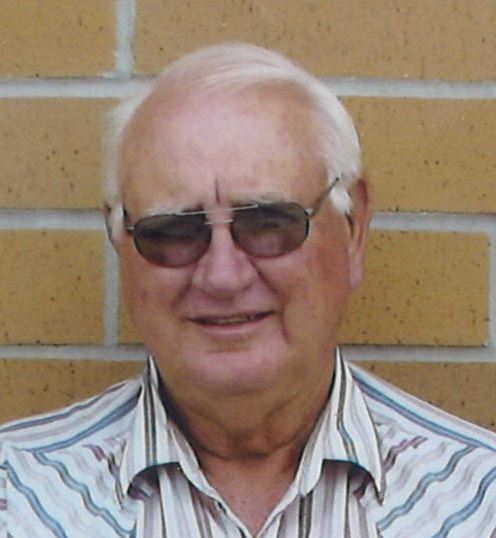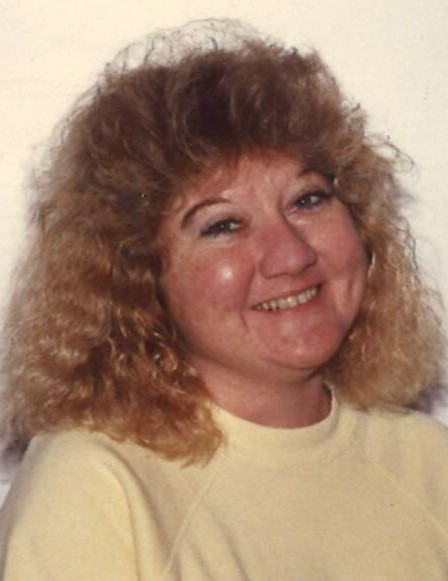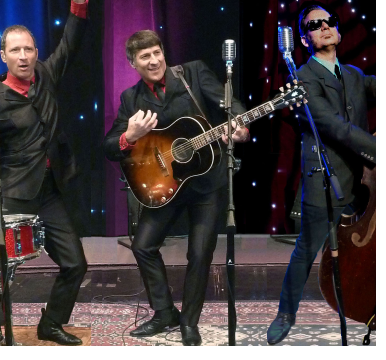The Cincinnati Reds basketball team, which was comprised of Reds players and other major league baseball players living in the tri-state Cincinnati area, came to Shelbyville in December of 1973 to take on a group of Shelby County All-Stars. The local squad outscored the visiting Reds contingent 55-38 in the second half to claim a 97-88 victory before a large crowd at what is now William L. Garrett Gymnasium.
The evening served as a fundraiser for the Shelbyville High School student council. SHS senior and student council president Mark Risley organized the event.
“I was working for the radio station while in high school and had an opportunity to interview several Reds players the previous spring,” said Risley. “I heard that the Reds had a basketball team in the offseason that played in surrounding communities for local charities. It sounded like a great idea. The school was very supportive. It turned out to be a great team effort for the student council. We made signs and promoted the event all over the county.”
Tickets were available for purchase at The State Bank of Waldron, The Ranch Supermarket, The Belaire Pharmacy, Griffey’s Sporting Goods and Hub Shoes. Risley stated that the game netted an excellent profit and was a success for all involved.
The concept of a traveling Cincinnati Reds basketball team was the brainchild of legendary Reds player Pete Rose.
“I had played basketball in the offseason since 1965 as a way of staying in peak condition,” said Rose in 1971. “We were all pretty good basketball players and needed some offseason competition so it seemed like a good idea.”
Unlike today, there were very few year-round work-out facilities during those days, hence players were responsible for their own offseason training. Basketball seemed like a good option.
The Cincinnati Bengals football team also fielded a basketball team and player contracts of the period did not prohibit playing basketball or similar physical activity.
The Reds made it clear that while the games would be played with a sense of goodwill, there would be serious competition involved.
“We didn’t want the games to be clown shows,” said Rose. “We wanted them to be competitive. We told the game community organizers that we wanted to go against good players. Otherwise, it made no sense for us to play.”
Risley went about the task of putting together a solid alumni team to battle the Reds, who played against former local standouts from communities basically within a 100-mile radius of Cincinnati with event proceeds dedicated to a community charity. The Reds began basketball play following the 1969 season and compiled a 51-4 record during the first two offseasons. Then, starting Reds centerfielder Bobby Tolan ruptured his Achilles tendon during a game in Frankfort, Kentucky, in January of 1971. His injury would sideline him for the entire upcoming season.
Reds general manager Bob Howsam subsequently asked Rose, Bench and most of the team’s starting position players to stop playing for the Reds basketball team.
“I was sad to have to stop,” said Rose. “I played basketball for a long time and Tolan was the only guy I ever saw get seriously injured. But, Mr. Howsam is the boss. It is a shame though. This was great public relations for the team and we played in front an estimated 90,000 fans over that two-year period.”
One can understand the prescient Howsam’s reservations following Tolan’s injury. He anticipated tremendous success for his developing “Big Red Machine” and was intent on keeping everyone healthy. The team had captured National League pennants in 1970 and 1972, a Western Division title in 1973 and would win back-to-back World series championships in 1975 and 1976.
Several Reds and other MLB players residing in the Cincinnati area during the offseason expressed an interest in continuing the program. Howsam gave his consent and the team continued for two more years. Howsam’s edict, however, deprived the Reds basketball team of its marquee players and best athletes and in doing so diminished the level of available basketball talent that the squad would need to compete against the formidable community teams they would face. Enter Dick Vories.
Vories had been a 1963 NAIA All-American basketball player at Georgetown College in Kentucky, scoring more than 3,000 points throughout a storied career. Rose had recruited him for a few of the more challenging contests such as when the Reds faced off against players from the 1961 and 1962 University of Cincinnati NCAA championship teams. The UC alumni handed the Reds a 30-point loss that night but Vories torched the nets for 49 points. Vories would henchforth be a member of the Reds basketball team.
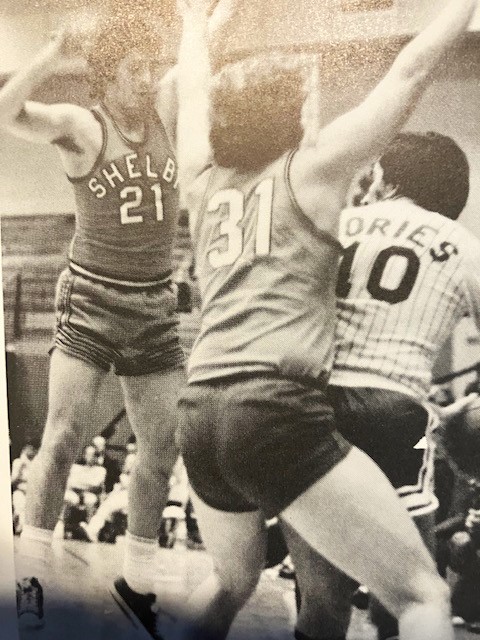
Shelby County's Garry Elkins (21) and Mike Sipes (31) trap Reds player Dick Vories during second-half action at Garrett Gymnasium.
The Reds team that played in Shelbyville on Dec. 6, 1973, had a seven-man roster that featured players with impressive resumes. Former Red Lee May, who electrified Cincinnati fans with his powerful bat from 1965 through 1971, played that night. May hit 25 or more home runs in eight different seasons during his MLB career. He was a member of the Houston Astros in 1973.
Pitcher Jack Billingham was the only player at the Shelbyville game who was still a member of the Reds at the time. He would be a prime contributor to two Cincinnati World Series titles in 1975 and 1976.
May and Billingham are both members of the Cincinnati Reds Baseball Hall of Fame.
Ross Grimsley also represented the Reds on the hardwood at Shelbyville. The left-handed hurler played three seasons with the Reds, compiling a record of 37 wins and 25 losses. He was traded to the Baltimore Orioles following the 1973 season.
Forty-two-year-old former pitcher and 9-time MLB all-star Jim Bunning was the oldest player on the court that December evening in Shelbyville and registered a basket for the Reds outfit. Bunning was a resident of northern Kentucky and later became a congressman and United States Senator.
Bunning was never a member of the Reds but pitched against them on numerous occasions. He had retired from baseball in 1971 after a 17-year career. He was inducted into the National Baseball Hall of Fame in Cooperstown in 1996.
Grimsley recorded 19 points against the Shelby County team, Billingham had 10 and May tallied 6, however the star of the night was Vories. The Newport native and former Georgetown All-American scored 47 points including 22 in the opening quarter that paced the Reds to a 50-42 halftime advantage.
1968 Shelbyville standout and Auburn basketball alumnus Tim Ash hit a jumper with just over three minutes to play to give the locals an 84-82 lead that they would not relinquish. Former SHS and Indiana University star Gary Long (playing at the age of 34) led Shelby County scoring with 27 points. 1966 Shelbyville graduate Garry Elkins contributed 19. 1965 Golden Bear graduate Terry Nicholson netted 11 points while Ash finished with 8. Shelby County outscored the Reds 29-20 in the fourth quarter to secure the win.
Long recalls a very competitive game.
“I think we were behind for a good portion of the night and came back at the end,” said Long. “I was playing a lot of basketball at the time so I was in playing shape. I had heard Vories’ name in basketball circles so I knew he was very good. Lee May had been a star with the Reds so he was well-known. The Reds’ players said that we should be glad that Rose no longer played because he was intense, could be rough and always played for keeps.”
The 17-man Shelby County roster included 13 former Golden Bears including seven Paul Cross Award recipients: Ash (1968), Long (1956 and 1957), Pat McKenney (1966), Mike Sipes (1972) Kent Laird (1973), Steve Drake (1967) and Jim Tindall (1957). Other former SHS players on hand were the above-mentioned Nicholson and Elkins, Rod Dickmann (1969), Doug Adams (1970), Jack Tindall (1957) and Brad Eads (1972).
Ray Hamilton, who played on excellent Southwestern teams between 1967 and 1970 for Indiana Basketball Hall of Fame coach George Marshall, took the court against the Reds, as did fellow former Southwestern standout and Dartmouth basketball alumnus Van McQueen.
Sam Ingle (class of 1970) and Billy Bob Scott (class of 1969) represented Triton Central High School and scored five points apiece.
The Reds basketball team ceased operation following the 1973 offseason.
Vories undoubtedly stole the show when the Reds basketball team came to Shelbyville. He dazzled the crowd with 47 points and his tremendous array of offensive skills. But more significant was the fact that area fans were treated to a living testimony to Shelby County’s basketball history.
Members of Shelbyville’s 1947 state championship team Bill Garrett, Marshall Murray, Loren Hemingway and Emerson Johnson served as honorary coaches for the Shelby County squad. 1953 Golden Bear graduate and Indiana All-Star Jim Plymate was also in attendance.
Golden Bear Gary Long was named to several high school all-state teams in 1957 and became a three-year letterman and two-year starter for Branch McCracken’s IU teams that compiled a three-year record of 46-24.
Tim Ash, Garry Elkins, Pat McKenney, Steve Drake, Doug Adams and Rod Dickmann played for Shelbyville during a tremendous five-year span of basketball success from 1965 through 1970 during which Shelbyville compiled a 77% cumulative winning percentage. It is indeed remarkable to consider that Ash and Elkins currently rank third and fifth respectively on the all-time Golden Bear scoring list more than 55 years after the conclusion of their high school basketball careers.
Southwestern’s Van McQueen tied the Memorial Gymnasium single-game scoring record with 39 points in the 1967 Columbus Sectional versus Brown County. Ray Hamilton was one of the area’s leading scorers in 1970 and led the Spartans to a 20-2 record that year.
This represents only a snapshot of the local basketball heritage on display that night. Each member of the Shelby County All-Star Team that faced off with the Reds in 1973 could relate multiple success stories from his basketball past.
Following the game, the Reds team players signed autographs and mingled with the people in attendance. The star-struck crowd may have been momentarily enamored with the Reds team celebrity and, for the moment, overlooked what would most likely dawn on them later: they had been witness to the inspirational legacy of Shelby County basketball. And more importantly, Shelby County won the game.
Get the most recent Shelby County Post headlines delivered to your email. Go to shelbycountypost.com and click on the free daily email signup link at the top of the page.

